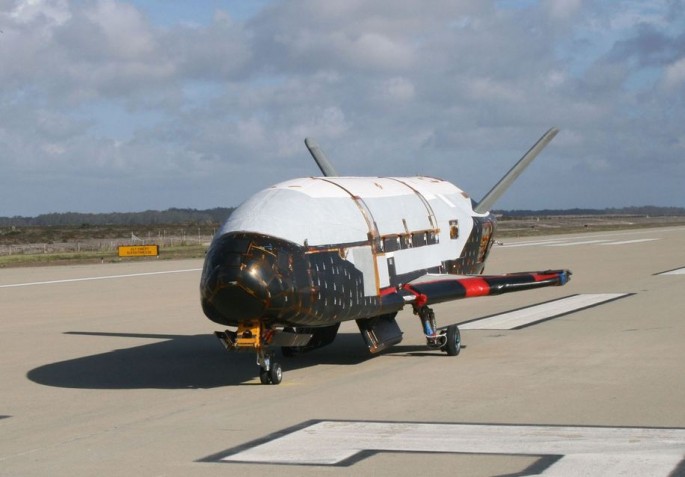The U.S. Air Force has lifted the veil of secrecy surrounding its "secret" X-37 space plane program to reveal the spaceplane's next flight on May 20 from Cape Canaveral aboard an Atlas 5 rocket will test the engine that will power future U.S. spacecraft.
The U.S. Department of Defense said the Air Force will test a prototype "Hall Effect Thruster" (HET) or "Hall Thruster" that will be used to propel military satellites (milsats) in Earth orbit or power future spacecraft on interplanetary voyages.
As a propulsion system for future U.S. space weapons, HETs will also allow the U.S. to maintain persistent orbital capabilities and lead to the development of killer satlets (small satellites); parasite satellites that attach themselves to enemy satellites to destroy them and other foreign satellite manipulation technologies.
HETs will give these milsats more maneuvering capability while granting more control over their operations.
A Hall Thruster is a type of ion thruster in which the propellant is accelerated by an electric field. It can operate on a variety of propellants, the most common being xenon. Other propellants of interest include krypton, argon, bismuth, iodine, magnesium and zinc.
Hall Thrusters are able to accelerate their exhaust to speeds between 10 km/s (36,000 km/h) to 80 km/s (288,000 km/h) with most models operating between 15 km/s (54,000 km/h) to 30 km/s (108,000 km/h).
The upcoming X-37B mission will test design modifications intended to improve performance to the HETs to be used on the Advanced Extremely High Frequency (AEHF) military communications satellites of the U.S., said DoD sources.
The AEHF satellites' HETs (produced by Aerojet Rocktdyne) are 4.5 kilowatt units that use electricity and xenon to produce thrust for maneuvering satellites in space. This exotic electric propulsion system produces a whisper-like thrust by ionizing and accelerating xenon gas.
An HET needs the stamina to operate for exceptionally long periods of time to harness its 0.06 pound-thrust into orbit-changing power.
The Air Force said the experiment will include collection of telemetry from the Hall Thruster operating in the space environment as well as measurement of the thrust imparted on the vehicle.
The resulting data will be used to validate and improve Hall Thruster and environmental modeling capabilities that enhance the ability to extrapolate ground test results to actual on-orbit performance.



























